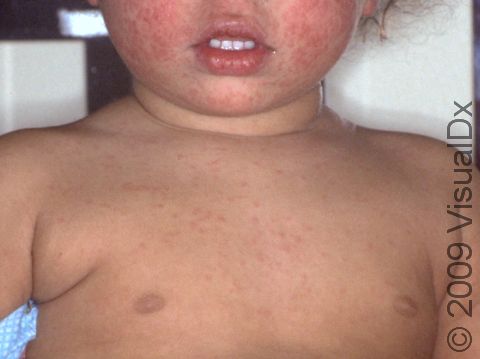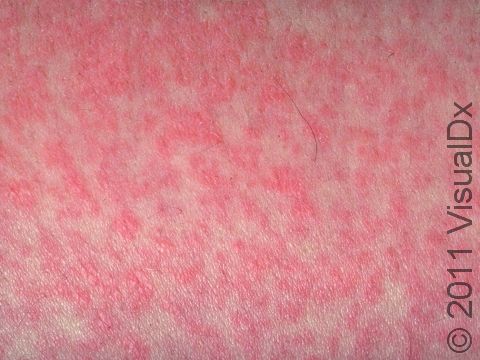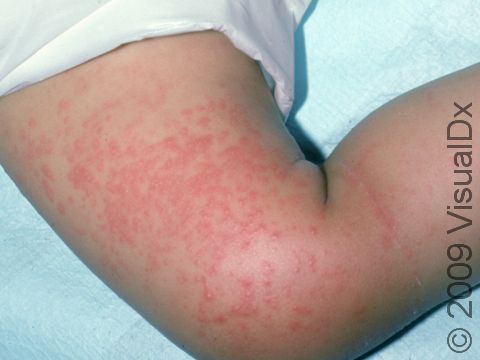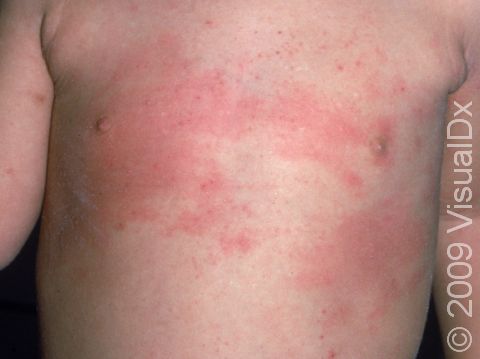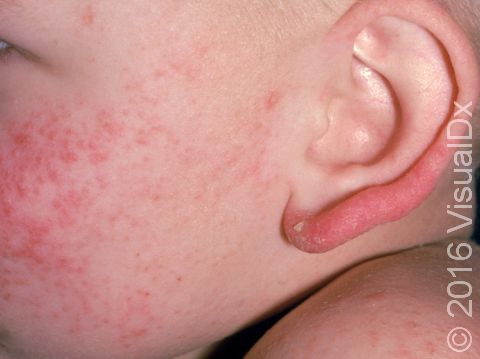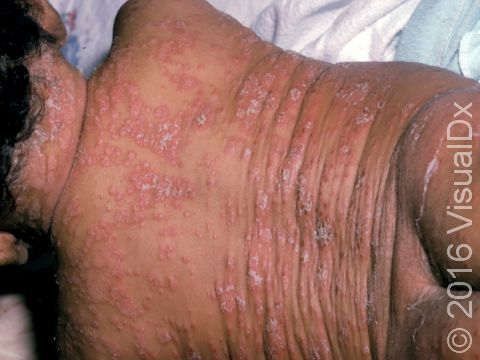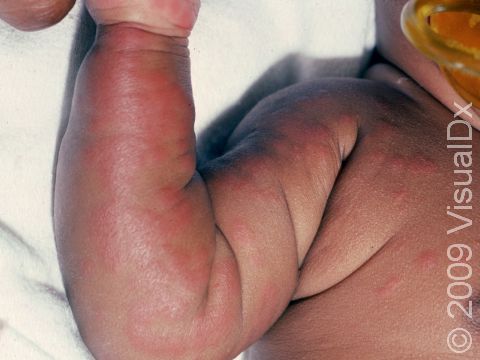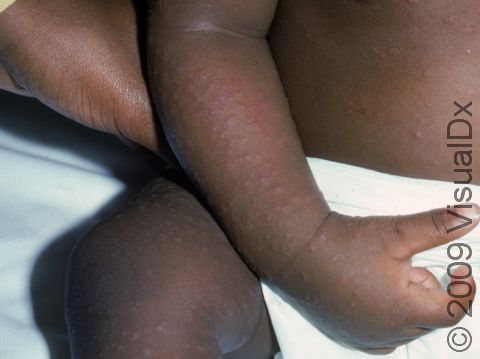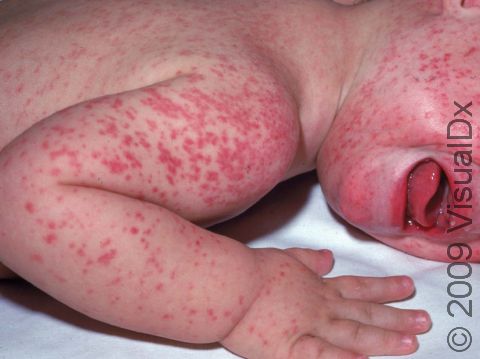Viral Exanthem
A viral exanthem is the general term for a rash caused by a virus. Many rashes can look similar, and it is often difficult to determine the exact cause of the rash. Other symptoms your child might have along with the rash may provide clues as to which virus is responsible for the rash. Many times the exact virus is not determined, but the illness is treated with supportive care, meaning that the symptoms are treated until they disappear. Viral exanthems generally appear red and blotchy and are present from head to toe.
Who's At Risk?
This rash is common in infants and/or children who have acquired a viral infection such as one causing cold symptoms or a sore throat.
Signs & Symptoms
A rash all over (widespread) of pink-to-red spots or bumps occurs primarily on the trunk, arms, and legs. It may or may not be itchy. Sometimes, the person does not feel well and might have fever, fatigue, headache, loss of appetite, aches and pains, and irritability.
Self-Care Guidelines
For people with only mild symptoms, no treatment is required, as the rash and illness often last for only a few days and go away on their own. However, you might try:
- Acetaminophen (Tylenol) or ibuprofen for low fever and aches and pains. (DO NOT USE aspirin in children aged 18 or younger.)
- Bed rest and plenty of liquids.
Treatments
The doctor may do blood tests or cultures to look for more serious causes of such a rash.
If a serious bacterial or other infection is suspected, antibiotics may be given.
Visit Urgency
See your child’s doctor if your child has a rash and any of the following:
- Fever with a temperature over 101 degrees that lasts more than a day
- Severe headache, stiff neck, confusion, unconsciousness, or seizures
- Diarrhea and/or vomiting, severe abdominal pain
- Severe cough or sputum with pus or blood
- Spots, swelling, and redness on the palms or soles, blisters, swollen and painful joints
- Red eyes, mouth, or tongue
- Rash that is bright red and does not fade (blanch) with finger pressure
Trusted Links
References
Bolognia, Jean L., ed. Dermatology, pp.1255-1259. New York: Mosby, 2003.
Freedberg, Irwin M., ed. Fitzpatrick’s Dermatology in General Medicine. 6th ed. pp.2099-2101. New York: McGraw-Hill, 2003.
Last modified on August 16th, 2022 at 2:44 pm

Not sure what to look for?
Try our new Rash and Skin Condition Finder
